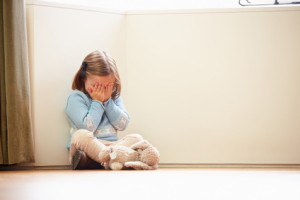- Calls to this hotline are currently being directed to Within Health or Eating Disorder Solutions
- Representatives are standing by 24/7 to help answer your questions
- All calls are confidential and HIPAA compliant
- There is no obligation or cost to call
- Eating Disorder Hope does not receive any commissions or fees dependent upon which provider you select
- Additional treatment providers are located on our directory or samhsa.gov
The Power of Treating Eating Disorders and Trauma Simultaneously
Contributor: By Megan Ross, LPC, R-DMT, GL-CMA, Director of Program Development & Trauma Awareness, Timberline Knolls

But what those in the behavioral health field are experiencing to an even greater degree today is a connection between eating disorders and trauma. A study revealed that 74% of 293 women attending residential treatment indicated that they had experienced a significant trauma.*
Types of Trauma
Trauma is often categorized in two ways: big “T” trauma and little “t” trauma. Big “T” trauma results from a catastrophic event such as physical abuse or injury, sexual assault or a natural disaster. Little “t” trauma is less about a specific experience and more about repetitive painful situations.
This would include ongoing emotional abuse by a parent, childhood neglect, or being bullied relentlessly in school.
The type of trauma experienced by the individual often influences whether anorexia or bulimia becomes part of the equation. Big “T” trauma is more likely to be associated with bulimia while little “t” trauma is often associated with anorexia.
The Earlier, the Worse

Therefore, a young girl would probably suffer extreme trauma if she experienced a life-threatening house fire; yet, as is commonly the case, an eating disorder such as anorexia or bulimia would not manifest until years later, likely during a time of transition or stress.
Trauma of a sexual nature is most apt to result in an eating disorder. This is due to the interpersonal nature of sexual trauma and is particularly the case if the violation was at the hand of an authority figure or family member. This type of trauma is incredibly damaging on so many levels. An eating disorder allows the woman or girl to avoid the pain, shame or guilt associated with the violation.
Treatment of Co-occurring Disorders
A woman or girl often enters treatment because an eating disorder has taken over her life. She can be provided with a treatment team that includes any number of clinicians and together, they can make great strides in treating the disorder.
But if the trauma is not addressed, the treatment is simply incomplete. It’s like cutting off the part of the plant that is visible. In time, it will grow back.
Treatment needs to deal with all disorders and diseases simultaneously. In addition to utilizing the recovery guidelines found in the 12-step program and the skills inherent to Dialectical Behavior Therapy (DBT), somatic experiencing (SE) has been proven to be an effective tool in trauma treatment.
Somatic Experiencing
SE is predicated on how animals living in the wild deal with life-threatening trauma and is concerned with survival energy. When animals are facing imminent danger, their bodies are filled with this energy, allowing them to rise to the occasion through the freeze, fight or flight response.
Once the threat is gone, animals intentionally release this pent—up energy, then return to normal life.
Can’t Get Rid of the Tension

Whether an individual is traumatized once, or repeatedly, that survival energy is rarely discharged, rarely neutralized, and therefore, remains trapped inside the body. SE suggests that trauma is a physiological, not psychological condition; therefore, the body must be included in therapy.
Undoing Coupling
SE also strives to undo coupling. This is when an idea, notion or experience is associated with the trauma. If a young girl is repeatedly abused in a room that contains a large digital clock, she will automatically associate these types of clocks with the assault; just seeing one could trigger a state of fear and anxiety for the rest of her life.
A goal of SE is to break this type of detrimental connection.
Process and Psycho-Educational Groups
Process and psycho-educational groups are essential in the treatment of trauma. So often, trauma survivors want to know “Why, why did this happen to me?” Why did the car hit me in the crosswalk? Why did the rapist choose me?
The truth is that questions such as these can rarely be answered. However, what can be accomplished is moving the person out of the “why” and into the “how.” How do I regulate my stress response; how do I cope with painful thoughts and emotions. Because stress and negative emotions will show up again—it is just part of life.
Experiential Therapies

Movement therapies such as yoga and Dance movement therapy can lead to tremendous self-discovery. Women can learn to trust and respect their bodies; some even grow to love their bodies and no longer desire to harm them through eating disordered behaviors.
When the impact of trauma on an individual is fully understood, it comes as no surprise that an eating disorder may be utilized as a coping strategy. Fortunately, with complete and comprehensive treatment, lifelong healing can be achieved.
Community Discussion – Share your thoughts here!
Have you experienced recovery from trauma? What types of treatment worked well for you? What advice can you share with others?
References:
- Brewerton, T. D. (2008). The links between PTSD and eating disorders. Psychiatric Times, 25(6), 1-7.
The opinions and views of our guest contributors are shared to provide a broad perspective of eating disorders. These are not necessarily the views of Eating Disorder Hope, but an effort to offer discussion of various issues by different concerned individuals.
Last Updated & Reviewed By: Jacquelyn Ekern, MS, LPC on February 21st, 2015
Published on EatingDisorderHope.com
